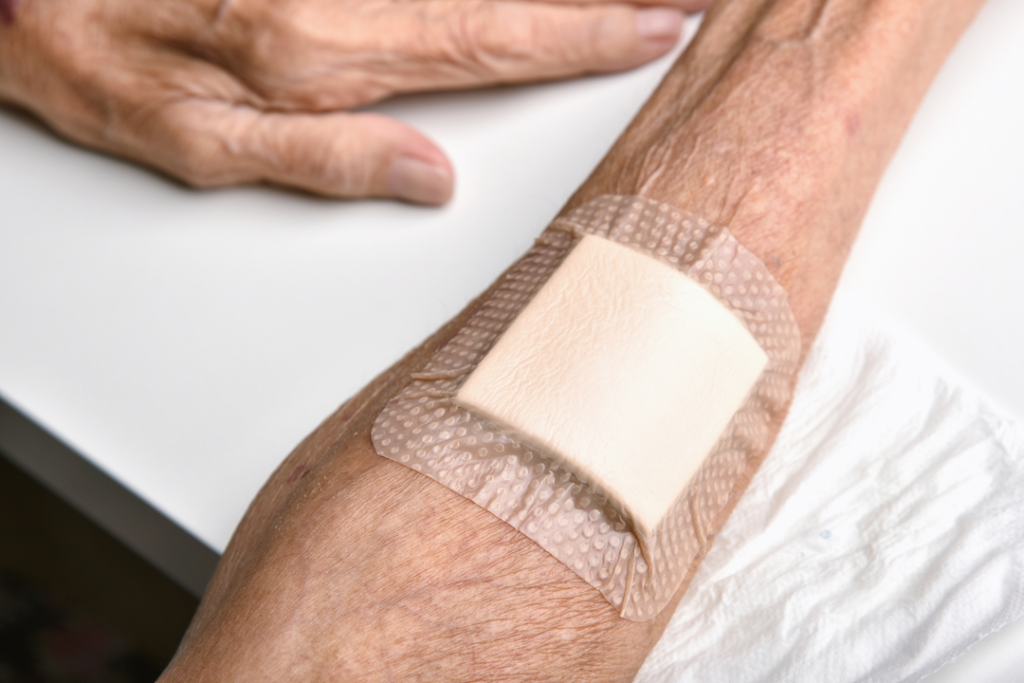
If you’ve noticed fluid coming from a wound, you’re not alone. Wound drainage is a common part of the body’s response to injury—but that doesn’t mean it should be ignored. The amount, color, and consistency of drainage can reveal a lot about how a wound is progressing—and whether it needs professional attention.
At Advanced Wound Therapy, we provide in-home care for patients across Oklahoma who are dealing with complex or slow-progressing wounds. One of the first things we assess is drainage, because changes here often point to deeper problems. If you’re unsure what’s normal and what’s not, this guide will help you know what to watch for—and when to bring in a specialist.
Wound drainage refers to the fluid that escapes from a wound as the body responds to tissue injury. It’s a mix of plasma, white blood cells, and sometimes dead tissue or bacteria. Drainage can be helpful—it keeps the area moist, flushes out contaminants, and supports natural processes. But not all drainage is a good sign.
There are several types of wound drainage, and each one tells a different story about what’s happening under the surface.
Some drainage is expected, especially early on. But certain patterns suggest the wound is stalling—or heading in the wrong direction. Here are the most important signs that the drainage isn’t normal:
These are all warning signs that the wound might be infected or that healing is delayed due to underlying issues like poor circulation, pressure, or compromised immunity.
Ignoring abnormal wound drainage can lead to serious complications. Infections can spread quickly, especially in patients with diabetes, vascular disease, or reduced mobility. What starts as a small issue can escalate into tissue death, bone involvement, or even the need for amputation if not addressed early.
That’s why Advanced Wound Therapy offers in-home evaluations. We bring expert-level wound care directly to the patient, making it easier to catch problems early and respond with the right strategies.
When our team visits a patient, we don’t just look at the fluid—we assess the entire wound and patient. We examine:
From there, we create a care plan that may include:
Want to learn more about how amniotic grafts support wound management? Take a look at this clinical study on their use in complex cases.
It’s easy to underestimate wound drainage—especially when it doesn’t look alarming at first. But subtle changes in fluid can be one of the first indicators that something isn’t right. If you’re seeing persistent drainage or a shift in how your wound looks, feels, or smells, it’s time to call in a specialist.
Advanced Wound Therapy is here to help. Our mobile wound care team will assess your wound in the comfort of your home and give you a personalized, expert-backed plan to manage drainage, reduce complications, and improve outcomes.
If wound drainage has you concerned, don’t wait—contact us today to schedule a visit from a specialist who truly understands what your wound needs.
Author: Matt Carmichael, DO
Don't wait—get the expert wound care you need. Schedule your consultation with Advanced Wound Therapy today.